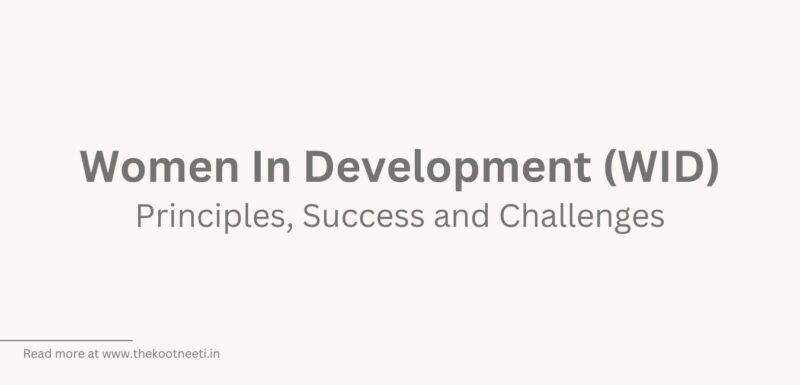Women In Development (WID): Principles, Success and Challenges

Women in development (WID) is a approach to development that focuses on the role of women in economic and social development. It emphasizes the need to address gender inequality and to promote the participation of women in all aspects of development.
The WID approach was developed in the 1970s in response to concerns that traditional development efforts were not adequately addressing the needs and contributions of women. The WID approach acknowledges that women often face specific challenges and discrimination that hinder their ability to fully participate in the development and benefit from it. These challenges include lack of access to education, economic opportunities, and decision-making power, as well as higher levels of poverty and vulnerability.
The WID approach calls for the inclusion of women in development planning and decision-making, as well as for the design of policies and programs that address the specific needs and rights of women. It also emphasizes the importance of building women’s capacity and empowering them to participate in development.
It has evolved over time and has influenced the development of other approaches, such as the gender and development (GAD) approach, which emphasizes the need to examine and transform gender relationships and power imbalances in development.
The main principles and goals of the Women in Development (WID) approach are:
- Gender equality: The WID approach recognizes that gender equality is an essential component of sustainable development and seeks to address the systemic inequalities that disadvantage women and girls.
- Empowerment of women: The WID approach seeks to empower women by promoting their active participation in all aspects of development, including decision-making processes, and by addressing the social, economic, and political barriers that limit their agency.
- Recognition of women’s rights: The WID approach advocates for the recognition and protection of women’s rights, including their reproductive rights, their rights to education and employment, and their rights to participate in public life.
- Integration of a gender perspective: The WID approach emphasizes the importance of integrating a gender perspective into all development policies and programs, in order to ensure that the needs and priorities of both women and men are taken into account.
- Capacity-building for women: The WID approach seeks to build the capacity of women through education, training, and other forms of support, in order to enable them to fully participate in development processes and to realize their full potential.
The successes and challenges of the WID approach
There have been many successes and challenges associated with the Women in Development (WID) approach. Some of the successes include:
- Increased awareness of gender inequality: The WID approach has contributed to an increased awareness of the importance of gender equality in development, and has helped to bring issues such as women’s empowerment and reproductive rights to the forefront of the development agenda.
- Improved access to education and employment: The WID approach has led to greater access to education and employment for women in many countries, which has in turn contributed to increased economic opportunities and independence for women.
- Greater participation in decision-making: The WID approach has helped to increase the participation of women in decision-making at all levels, including in local communities, national governments, and international organizations.
- Enhanced livelihoods: The WID approach has contributed to the enhancement of livelihoods for women in many parts of the world, through initiatives such as microfinance programs and entrepreneurship support.
Some of the challenges associated with the WID approach include:
- Resistance to change: There has been resistance to the WID approach in some quarters, particularly from those who view it as a threat to traditional gender roles and power dynamics.
- Limited resources: The WID approach has often been underfunded, which has limited its ability to achieve its goals and to scale up successful initiatives.
- Lack of gender-disaggregated data: There has often been a lack of accurate and comprehensive data on the situation of women and girls, which has made it difficult to measure the impact of the WID approach and to identify areas in need of improvement.
- Limited institutional support: There has often been a lack of institutional support for the WID approach, both within governments and international organizations, which has made it difficult to mainstream a gender perspective into development policies and programs.



















